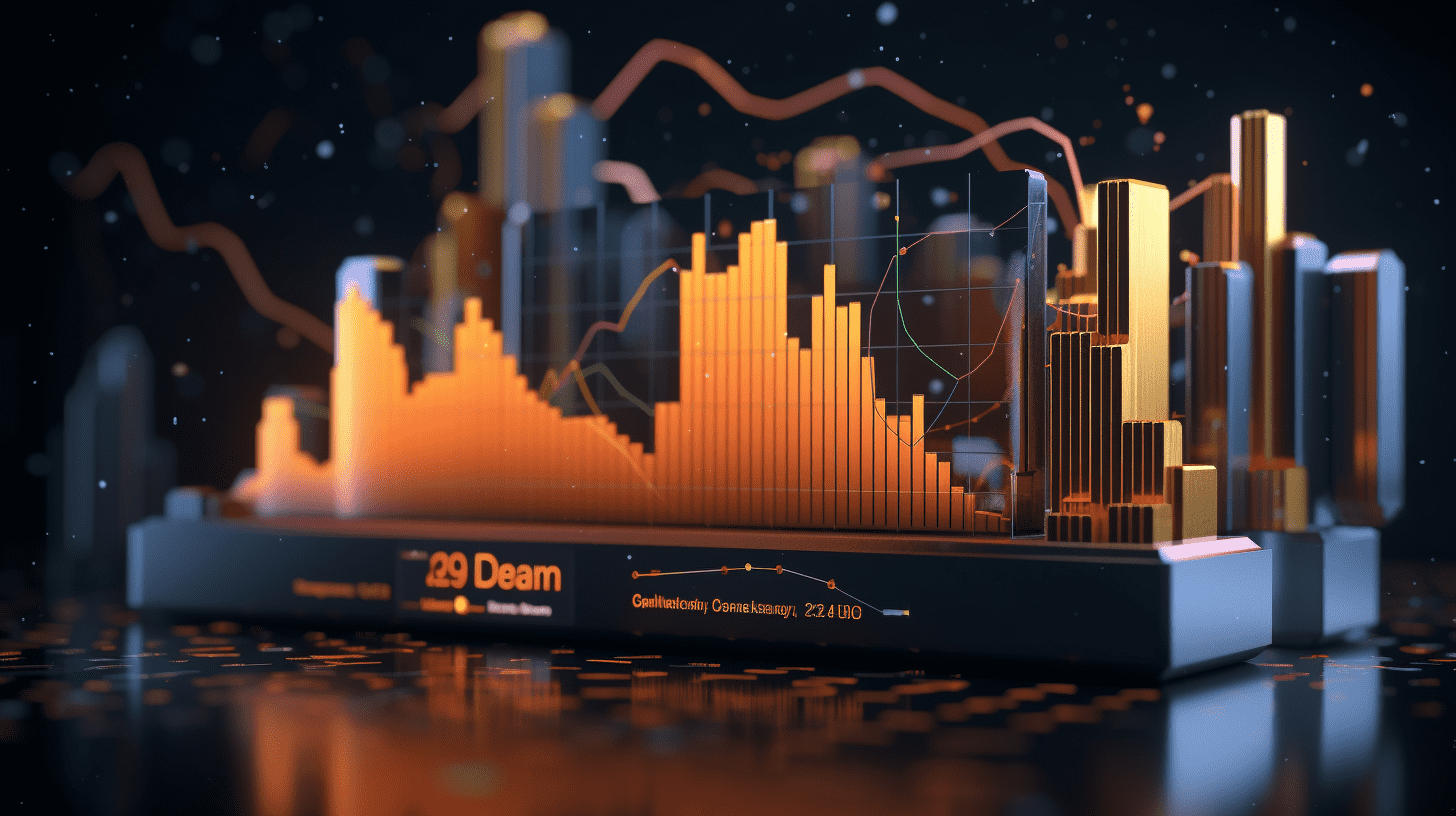
Summary of the performance report of the ChiNext Innovation Board in the past 23 years: Signs of dawn emerging, focusing on highlights.
The China Gold Research Report states that the 2023 performance reports of companies listed on the Science and Technology Innovation Board have been released. It is estimated that the full-year operating income of Science and Technology Innovation Board companies in 2023 increased by 4.8% year-on-year, which is expected to outperform the overall growth rate of non-financial A-share companies. The net profit attributable to shareholders is expected to decline by 39.7% year-on-year, which is basically in line with the profit growth rate of the first three quarters, and the decline is expected to be greater than that of non-financial A-share companies during the same period. Taking into account the low base of the first quarter performance growth rate of the Science and Technology Innovation Board in 2023 and the microeconomic outlook of the main industries of the Science and Technology Innovation Board in the first two months of this year, it is expected that the performance growth rate of the Science and Technology Innovation Board is expected to bottom out and rebound.
Key points from China Gold include:
The performance growth rate of the Science and Technology Innovation Board is expected to bottom out and rebound, with a dawn appearing.
As of March 1st, the 2023 performance reports of companies listed on the Science and Technology Innovation Board have been released. It is estimated that the full-year operating income of companies listed on the Science and Technology Innovation Board in 2023 increased by 4.8% year-on-year, which is expected to outperform the overall growth rate of non-financial A-share companies. The net profit attributable to shareholders is expected to decline by 39.7% year-on-year, which is basically in line with the profit growth rate of the first three quarters, and the decline may be greater than that of non-financial A-share companies during the same period. Taking into account the low base of the first quarter performance growth rate of the Science and Technology Innovation Board in 2023 and the microeconomic outlook of the main industries of the Science and Technology Innovation Board in the first two months of this year, it is expected that the performance growth rate of the Science and Technology Innovation Board is expected to bottom out and rebound, with the year-on-year growth rate in the first quarter of 2024 expected to be better than that in the fourth quarter of the previous year.
In terms of profitability, the return on equity (ROE) of the Science and Technology Innovation Board is expected to decrease from 7.0% in 2022 to 3.9% in 2023. Specifically, the decline in net profit margin from 9.5% to 5.5% is the main influencing factor, and the asset turnover rate has also fallen. It is expected that with the improvement in the macroeconomic environment and the key semiconductor industry in 2024, there is hope for improvement. Specifically:
The Science and Technology Innovation Board focuses on "hard technology," and the performance growth rate of key sectors such as semiconductors in 2024 is expected to stabilize.
Since its establishment five years ago, the Science and Technology Innovation Board has become a concentrated center of "hard technology." The concentration of industries is high. For example, in 2022, the net profit of the semiconductor/photovoltaic equipment/medical equipment/battery industries accounted for 23%/23%/15%/7% of the net profit of the Science and Technology Innovation Board, totaling 68% (excluding unprofitable industries such as bioproducts and chemical pharmaceuticals). Combined with the performance reports, the full-year profit growth rates of the semiconductor/photovoltaic equipment/medical equipment/battery industries in 2023 are expected to be -60.0%/-16.1%/-65.9%/-86.1%. Based on the industry concentration, the performance fluctuations of some large companies have affected the profitability of the Science and Technology Innovation Board, but it is expected that 42% of companies in the Science and Technology Innovation Board will achieve positive year-on-year profit growth in 2023.
In terms of industries, the profitability of industries such as semiconductors declined in 2023, but the global technology hardware industry cycle is bottoming out and improving. Global and Chinese semiconductor cycle sales continue to improve, and shipments of key downstream products such as mobile phones have rebounded compared to the previous year. The destocking of consumer electronics and electronic components is relatively sufficient, and it is expected that the profitability growth rate in the technology hardware sector in 2024 will stabilize; after the medical industry related to epidemic prevention returns to normal, the pressure on business performance base will also ease.
Focus on the capital expenditure cycle of key industries.
Against the backdrop of the rising importance of technological innovation and industrial chain security, coupled with global post-pandemic recovery, China's high-end manufacturing sector has entered a cycle of prosperity since 2020, with strong demand driving rapid capacity expansion. Specifically, in the context of high prosperity, industries such as semiconductors, photovoltaic equipment, and batteries have expanded their capital expenditure, with cumulative growth rates of capital expenditure from 2020 to 2022 reaching 232% for semiconductors, 141% for medical equipment, 226% for photovoltaic equipment, and 318% for batteries. Following the supply expansion in the early part of 2023, attention should be paid to the progress of supply clearance in 2024, especially in high-end manufacturing industries related to new energy.
Challenges and opportunities for enterprises going global coexist.
Since 2020, the overall proportion of overseas revenue for the Science and Technology Innovation Board has been 22.5%, with key industries such as consumer electronics, photovoltaic equipment, and semiconductors having relatively high overseas revenue. Export and overseas environmental changes also have an impact on the overall performance of the Science and Technology Innovation Board. In 2023, manufacturing industries in some major overseas economies were in a destocking cycle, and restrictions on technology in some overseas economies have also impacted the revenue of industries related to the Science and Technology Innovation Board. However, companies facing challenges also have opportunities; the trends of intelligence and AI, as well as the transformation to green energy, are expected to bring new opportunities for companies with a high proportion of overseas revenue. The support provided by China's large, long and complete industrial chains enhances the global competitiveness of Chinese companies, and many industries are still upgrading in trend.
Science and Technology Innovation Board companies maintain high R&D investments for the long term.
The industry composition of the Science and Technology Innovation Board reflects a distinct feature of technological innovation, with a continuing trend of high R&D investments, high R&D expenditure as a proportion, and long-term high growth rates. In 2023, although the growth rate of operating income of the Science and Technology Innovation Board has slowed down, with the growth rate of overall revenue falling to around 5% in the first three quarters, the growth rate of R&D expenditure has remained at a relatively high level of 25%, which is consistent with the level in 2022. From a medium to long-term perspective, the relatively stable high R&D investment helps technological innovation companies maintain their pioneering capabilities and reduce the impact of cyclical factors on their development and long-term competitiveness.
What are the highlights of the current Science and Technology Innovation Board?
Based on the strategy of innovation-driven development, "hard technology" is accelerating integration.
After nearly five years of development, the Science and Technology Innovation Board has always been based on the strategy of innovation-driven development, continuously leveraging its leading advantage in attracting companies in the field of technological innovation. With the continuous concentration of industries towards "hard technology," the brand effect has become more prominent. The current Science and Technology Innovation Board has developed into an important platform supporting the development of "hard technology" companies. According to incomplete statistics, there are 326 specialized and innovative companies listed on the Science and Technology Innovation Board, accounting for nearly 60%, which strongly promotes the optimization and upgrading of industrial chains and supply chains. In terms of industry distribution, the 569 listed companies on the Science and Technology Innovation Board are concentrated in the electronics (24%), pharmaceuticals and biotechnology (19%), machinery and equipment (15%), computer (11%), and power equipment (10%) industries. Among the sub-industries, the semiconductor industry has the highest proportion, reaching 18%; in terms of market value, the total market value of the Science and Technology Innovation Board exceeds 5.7 trillion yuan, mainly concentrated in the electronics (40%), pharmaceuticals and biotechnology (20%), power equipment (12%), and machinery industries.Mechanical equipment (10%).The advantage of core technological competitiveness is highlighted.
Since 2020, the research and development expense ratio of the Science and Technology Innovation Board has remained above 10% for a long period of time, significantly higher than the non-financial A-share ratio of 3%. Among the companies on the Science and Technology Innovation Board, a total of 160 companies had an average research and development expense ratio greater than 20% from 2020 to 2022, accounting for 28.5%, with 12% of companies having a research and development expense ratio exceeding 30%. In terms of the number of research and development personnel, from 2020 to 2022, a total of 150 companies on the Science and Technology Innovation Board had a research and development personnel ratio exceeding 30%, accounting for 26%, with 8% of companies having a research and development personnel ratio exceeding 50%. The long-term high research and development intensity is expected to further enhance the growth potential of companies listed on the Science and Technology Innovation Board, potentially entering an accelerated period of harvest in the future, improving core technological competitive advantage and performance, and forming a positive cycle.
The performance growth of sub-industries in 2023 remains relatively impressive.
As of the third quarter of 2023, the performance growth rates of sub-industries on the Science and Technology Innovation Board, such as automotive parts (+418%), other power equipment (+175%), computer equipment (+86%), small home appliances (+68%), and consumer electronics (+57%), were significantly higher than the performance of the main board during the same period. The full-year performance also continued to maintain a high growth level, providing a lot of investment opportunities in quality tracks on the Science and Technology Innovation Board.
Companies on the Science and Technology Innovation Board benefit from medium and long-term policy dividends.
From the perspective of policies and industry trends, "leading the construction of a modern industrial system with technological innovation" is the primary task of economic work in 2024. The Science and Technology Innovation Board represents the new productive forces of our country, and combined with the current critical point in the industry transformation, policy support combined with industry trends is expected to drive further improvement in internal growth on the Science and Technology Innovation Board.
RECOMMEND
©️2013 - 2025 GMT EIGHT Holdings. All Rights Reserved.
Contact: contact@gmteight.com


